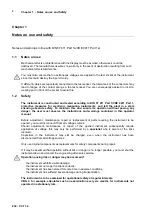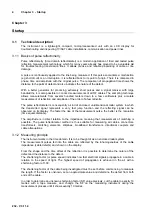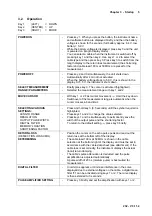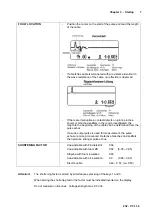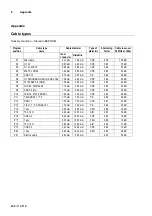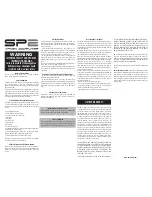
4
Chapter 3 - Startup
232 - V 3.11.4
Chapter 3
Startup
3.1 Technical
description
The instrument is a lightweight, compact, microprocessorized unit with an LCD display for
troubleshooting and inspecting TV/SAT cable installations, communication and power lines.
3.1.1 Basics of pulse reflectometry
Pulse reflectometry (time domain reflectometer) is a modern application of tried and tested pulse
reflection measurement technology, which for many years already has proved to be a valuable aid
for troubleshooting transmission lines. It allows precise and reliable pinpointing of cable or line
damage.
A pulse is continuously applied to the line being measured. If this pulse encounters a malfunction
(eg shortcircuit) or an interruption, it is reflected back to its point of origin. There it is compared in
phase, time and amplitude with the original pulse. The comparison of propagation time shows the
distance to the point of defect and also indicates the nature of the defect.
With a better generator for producing extremely short pulses and a signal receiver with large
bandwidths, it is also possible to conduct measurements of all RF cables. The sampling technique
allows measurements from several hundred meters down to a few centimeters plus accurate
measurement of reflection and amplitude of the order of a few millivolts.
The pulse reflectometer is consequently a kind of enclosed, unidimensional radar system in which
the transmitted signal represents a very fast jump function and the reflecting signal can be
observed on its display. The faster the rise of the measurement pulse, the better is the resolution
(time equals distance).
The amplitude is in direct relation to the impedance, meaning that measurement of matching is
possible. The pulse reflectometer method is thus suitable for measuring all cables, connectors,
transformers, matching elements, striplines, broadband transformers. directional couplers and
cable attenuations.
3.1.2 Measuring principle
The instrument works in the time domain. It is to be thought of as an enclosed radar system.
The measurement pulses fed into the cable are reflected by the inhomogeneities of the cable
impedance (cable defects) and shown on the display.
From the shape and the time offset of the reflection it is possible to determine the nature of the
defect and the distance to the defect.
The shortening factor (or pulse speed) indicates how fast electrical signals propagate in a cable in
relation to the speed of light. The highest speed of propagation is achieved in the air with a
shortening factor of 1.00.
The shortening factor of the cable being investigated must be set before commencing to measure
the length. If the factor is unknown, set an approximate value and determine the defect from both
ends of the cable.
In order to determine an unknown shortening factor (SF) value precisely, cut the cable to exactly 10
metres with a tape measure, and change the SF on the measuring instrument during the
measurement process until it shows exactly 10 metres.


